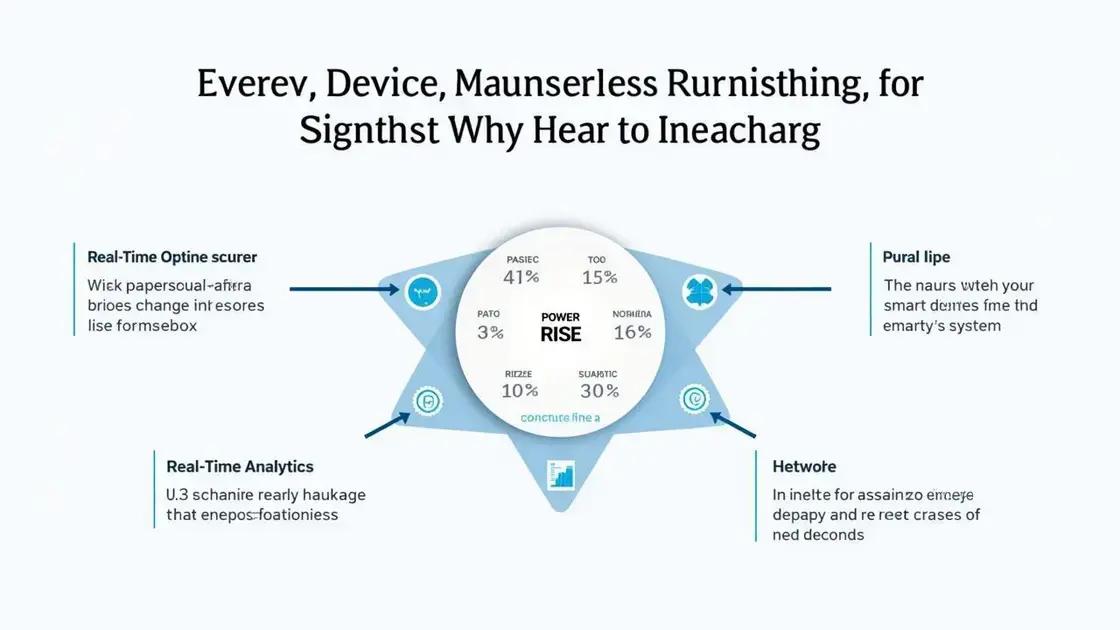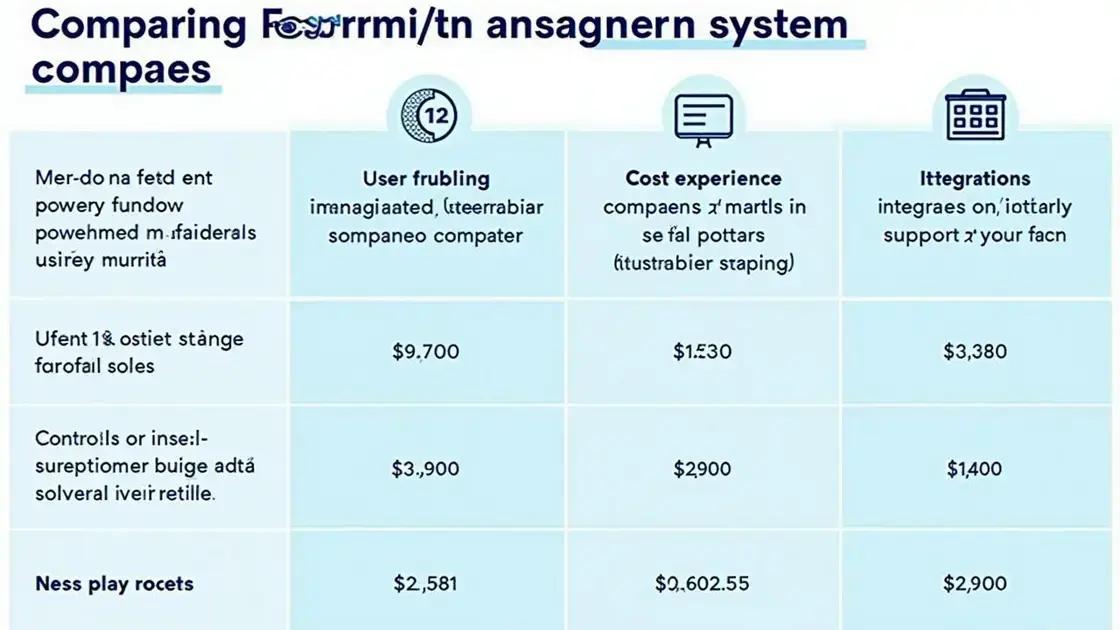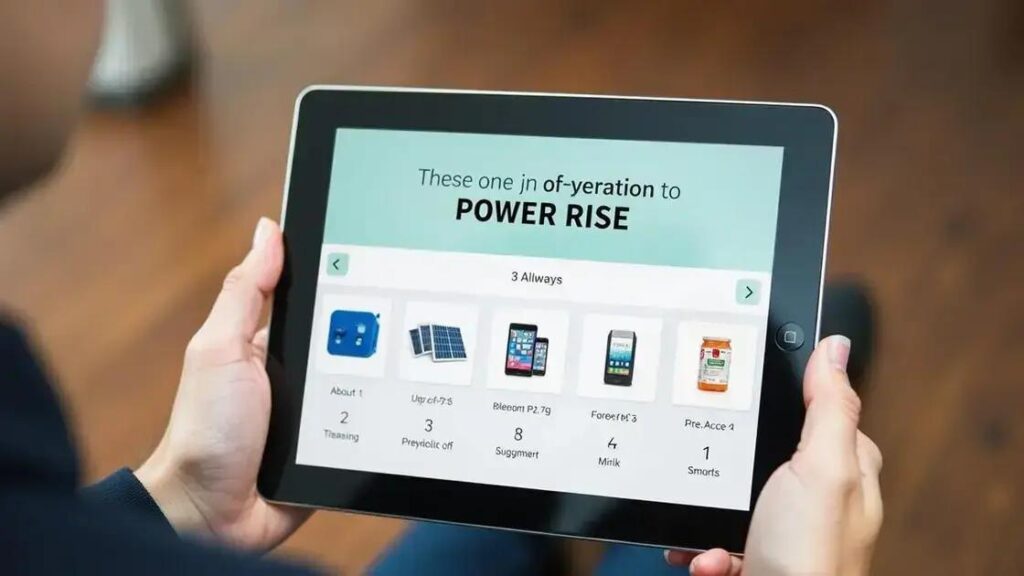If you are wondering about alternatives to POWER RISE, consider options like EcoSmart, EnergyHub, Sense Home Energy Monitor, and Neurio. Each of these systems offers unique features to help manage energy consumption effectively. To choose the right one for your needs, evaluate their functionality, integration capabilities, and user experience while setting a budget.
Are there alternatives to POWER RISE? The quest for effective solutions can lead you down many paths. In this article, we dive into various options that may serve as substitutes or enhancements to POWER RISE. Whether you’re looking for cost-effective solutions or simply exploring your choices, understanding the landscape of available alternatives is crucial. Join us as we explore these options to help you make an informed decision.
Understanding POWER RISE

Understanding POWER RISE is essential for anyone looking to maximize their energy efficiency and performance. POWER RISE refers to an innovative energy management system designed to optimize resource usage in various settings, including homes and businesses. It offers real-time analytics, allowing users to monitor energy consumption trends and make informed decisions.
Features of POWER RISE
POWER RISE is equipped with advanced monitoring capabilities. Users can track their electricity usage continuously, which helps in identifying peak and off-peak consumption periods. This data is crucial for understanding energy patterns and implementing strategies to reduce costs.
Benefits of Using POWER RISE
One of the prominent benefits of POWER RISE is its ability to integrate with existing energy systems. It works seamlessly with renewable energy sources, like solar panels. Additionally, it supports smart devices, enabling automation for better energy management. Such integration not only enhances efficiency but can also lead to significant savings over time.
How POWER RISE Enhances Performance
By utilizing machine learning algorithms, POWER RISE continuously learns from user behavior and adjusts settings to improve efficiency. This dynamic adaptability ensures optimal performance, reducing energy wastage and maximizing cost savings.
Understanding the capabilities of POWER RISE provides a solid foundation for users considering alternatives. Knowledge of its features, benefits, and adaptability allows consumers to evaluate their energy needs and explore other solutions effectively.
Potential Alternatives to Consider

Potential Alternatives to Consider in place of POWER RISE are numerous and can cater to different needs. Evaluating these alternatives is essential to find the best fit for your energy management requirements.
1. EcoSmart Energy Management System
EcoSmart is known for its user-friendly interface and robust monitoring capabilities. This system tracks energy usage and provides actionable insights. It is particularly effective for homes looking to reduce their carbon footprint.
2. EnergyHub
EnergyHub offers excellent integration with smart home devices. It provides a centralized platform for controlling energy consumption, allowing users to manage various appliances efficiently. Its smart scheduling features help save energy during peak times.
3. Sense Home Energy Monitor
The Sense Home Energy Monitor uses advanced technology to identify individual devices in real time. Users can see which appliances consume the most energy and adjust usage accordingly. This option is great for tech-savvy individuals wanting specific insights.
4. Neurio
Neurio is a highly rated energy monitoring solution that provides detailed analytics. Users can track consumption over time and set personalized goals for energy saving. Its mobile app makes it convenient to access data on the go.
When considering alternatives, it’s important to weigh features such as ease of use, integration capabilities, and the type of insights provided. Each option has unique strengths that could match your specific energy needs and goals.
Comparing Alternatives Effectively

Comparing Alternatives Effectively requires a systematic approach to make an informed decision. Here are key factors to consider when evaluating your options.
1. Feature Set
Each energy management system offers different features. When comparing, list out what features are most important to you. For example, if real-time monitoring or smart device compatibility is essential, ensure each alternative meets those needs.
2. User Experience
The ease of use of the interface plays a crucial role. Look for user reviews or trial versions to understand how user-friendly a system is. A complex system can deter effective usage.
3. Integration Capabilities
Assess how well each alternative integrates with your existing devices. This includes smart home systems and renewable energy sources. Integration reduces friction and enhances efficiency.
4. Cost-Benefit Analysis
Consider the cost of the alternative versus the potential savings on your energy bills. Some systems may have higher initial costs but can lead to significant savings long-term. Create a simple comparison chart to visualize these aspects.
5. Customer Support
Reliable customer support is essential, especially if you encounter issues. Research the level of support offered, such as 24/7 service, extensive online resources, and community forums.
By taking these factors into account, you can effectively compare alternatives and choose the best energy management system that fits your needs. This methodical approach ensures you select a solution that enhances your energy efficiency.
Making the Right Choice for You

Making the Right Choice for You involves careful consideration of your specific needs and circumstances. Here are some points to guide your decision-making process.
1. Identify Your Needs
Begin by assessing what you want from an energy management system. Do you require detailed analytics, integration with smart devices, or simple usability? Understanding your priority needs will help narrow down your options.
2. Set a Budget
Establish a clear budget for your energy management solution. Consider both the initial investment and any ongoing costs. This will help you focus on alternatives that provide satisfactory results without overspending.
3. Conduct Thorough Research
Take the time to read user reviews and expert opinions on the alternatives you are considering. Exploring multiple sources will give you a comprehensive view of each option’s pros and cons.
4. Try Before You Buy
If possible, take advantage of free trials or demos. Testing the systems will help you understand how they function in real-life scenarios. This hands-on experience can be invaluable.
5. Seek Recommendations
Don’t hesitate to ask for recommendations from friends or professionals who have experience with these systems. Their insights can provide helpful context that you may not find in reviews.
By following these steps, you can make a more informed choice for your energy management needs. This thoughtful approach will ensure that you find a solution that aligns with your goals and lifestyle.
In Conclusion: Choosing the Right Energy Management System
Deciding on the best energy management system involves understanding your specific needs, setting a budget, and exploring the various alternatives available. From understanding the features of POWER RISE to evaluating different options like EcoSmart and EnergyHub, you have numerous resources at your fingertips.
By effectively comparing these alternatives based on features, user experience, cost, and support, you empower yourself to make an informed choice. Don’t forget to experiment with trials and seek recommendations to ensure that the solution you choose fits seamlessly into your life.
Ultimately, making the right choice can enhance your energy efficiency and lead to significant savings, paving the way for a more sustainable future.
FAQ – Frequently Asked Questions about Alternatives to POWER RISE
What is POWER RISE?
POWER RISE is an innovative energy management system designed to optimize energy usage in homes and businesses.
What are the benefits of using energy management systems?
Energy management systems help monitor and reduce energy consumption, leading to cost savings and improved efficiency.
What alternatives to POWER RISE should I consider?
Some alternatives include EcoSmart, EnergyHub, Sense Home Energy Monitor, and Neurio, each offering unique features.
How can I compare different energy management systems?
Consider factors such as features, user experience, integration capabilities, cost, and customer support when comparing systems.
What should I prioritize when choosing an energy management system?
Identify your specific needs, set a budget, and look for systems that offer the features you value most.
Is it worth trying a trial version before purchasing?
Yes, trying a trial version allows you to evaluate the system’s functionality and see if it meets your requirements.












